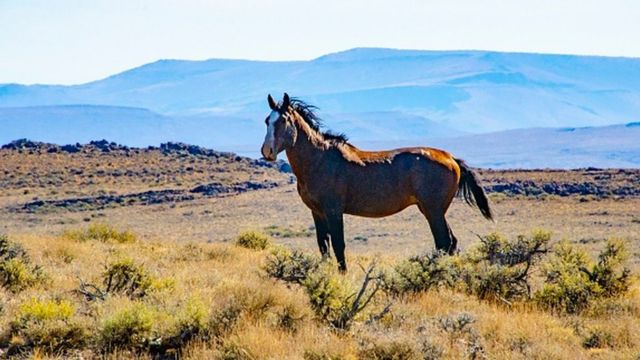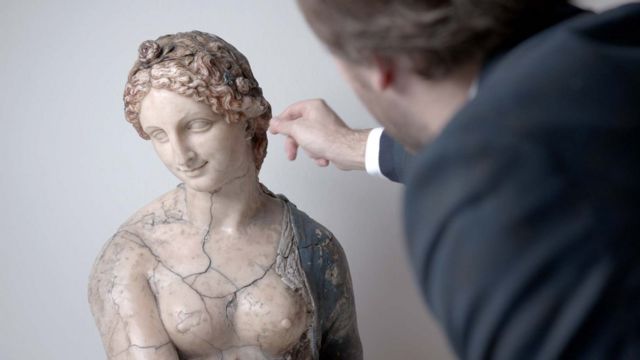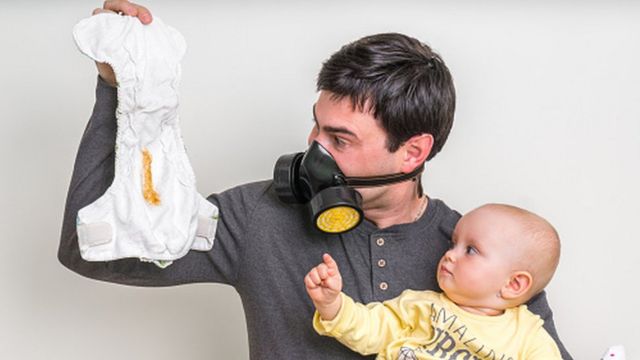The science news of the week: At first glance, predicting the future health of a newborn based on the contents of its diaper is a thankless task. But it is only at first glance. Researchers from the Faculty of Medicine at the University of British Columbia in Canada, in their work published in Cell Reports Medicine, have visually demonstrated how the composition of a dense, dark green substance called meconium (also known as first stool) can accurately determine whether a child will develop various allergies in the first year of life. Meconium, which a baby usually eliminates on his or her birthday, is composed of a variety of elements – epithelial cells, amniotic fluid, and various metabolites – end products of metabolism. “As our analysis showed, newborns who developed allergic sensitization by one year of age had much worse meconium at birth compared to children who did not become allergic,” said one of the study’s authors, Dr. Brett Finley. “Meconium is like a time capsule that shows what the baby was exposed to before birth. It contains a variety of molecules that the baby was exposed to in the womb or acquired from the mother, and it serves as the first food for the developing gut microbes,” Dr. Finley, the project’s scientific director, tells Dr. Karissa Petersen. After analyzing the meconium of hundreds of infants, the study authors concluded that the fewer different types …
We explain quickly, simply, and clearly what happened, why it matters, and what happens next. The number of offers should remain: episodes. End of story: Podcast Advertising. “Our research shows that the development of a healthy immune system and microbiome essentially begins before birth, and that the tiny molecules a baby interacts with in the womb have a huge impact on its future health,” says Dr. Petersen. Using a self-learning algorithm, researchers can now predict with up to 76% accuracy (much higher than any previous analysis method) whether a child will develop a particular allergy based on available information about the composition of meconium and clinical data. Of course, it is helpful to know that your child is likely to have some kind of allergy, but is there anything you can do to prevent it? The best preventive measure currently in use is to introduce newborns to beneficial microorganisms. According to Karissa Petersen, this is best achieved through natural childbirth and breastfeeding. She also urges people to limit their use of unnecessary antibiotics, to let children play in the grass more often, and to be less zealous about cleanliness by reducing the overuse of disinfectants.

Horses and donkeys are ancient friends and helpers of mankind. And, as it turns out, not just to humans: in the American desert, they dig deep wells in search of water, which many other species then freely use. This phenomenon was first discovered by biologist Eric Lundgren of the University of Technology in Sydney, Australia, while studying irrigation systems in western Arizona. He already knew that the wells dug by African elephants during the dry season were the only source of water for many animals. But Lundgren decided to find out if horses and donkeys in the American desert could play the same role. The idea intrigued him all the more because these ungulates were relatively recently introduced to the Americas, and some scientists traditionally consider them invasive species that damage local biodiversity. For three consecutive summers, Lundgren and his colleagues studied life in the Sonoran Desert, which stretches from Arizona to California, comparing how much water animals consume from rivers and streams during dry periods (some of which dry up at this time of year) with how much they consume from wells dug by hoofed animals. It turned out that such wells, sometimes two meters deep, not only shorten the distance to water sources and facilitate the search for water, but also sometimes serve as the only source of water for many desert dwellers, especially during dry periods. According to Lundgren, such wells serve as reliable insurance against water shortages for a wide range of species, from deer and owls to cougars and even black bears. In addition, such wells become miniature oases around which shrubs and even trees begin to grow. All this is thanks to the horses and donkeys that were imported to America by the first colonists and served them faithfully until the invention of the internal combustion engine. Wild horses, of which there are many in America, are now considered pests by many experts, but Lundgren strongly disagrees. His work demonstrates that they play a very important role in the ecosystem, and that role will only increase as water supplies in the desert regions of the United States begin to dwindle as a result of human activity. According to Lundgren, the story has another unexpected twist: “The fact is that horses and even elephants once lived in the Americas and may have performed the same function of providing water for other animals. But about 12,000 years ago, for some unknown reason, they disappeared from there. So this ancient precedent can be used to justify today’s American horses.

This bust of the Roman goddess Flora, from the collection of the Bode Museum in Berlin, was officially attributed to the Renaissance genius Leonardo da Vinci. And although many art experts objected to such an attribution, pointing out that there was no direct evidence of authorship, others claimed that the features of the goddess’s face were too similar to those of the ladies depicted in the Italian master’s portraits, and therefore there was nothing to argue about. But once again, science intervened in the debate and the argument was settled. The bust of a mysteriously smiling woman, measuring 70 centimeters and weighing 28 kilograms, was acquired by the director of the Kaiser Friedrich Museum, Wilhelm von Bode, at an auction in 1909. At the same time, von Bode concluded that it was a work by Leonardo (nothing less would be appropriate for a museum named after the Kaiser). Just two years later, however, European art historians (no doubt jealous of the Berlin museum) published over 700 articles questioning the sculpture’s authorship. At the same time, a chemical analysis of the masterpiece revealed traces of spermaceti, a waxy substance extracted from the heads of sperm whales. Although spermaceti was known in da Vinci’s time, it was not widely used in sculpture until the 19th century. Another investigation inside the sculpture found fragments of wood and… scraps of a newspaper from the same 19th century, but the museum administration once again found an excuse, pointing out that these materials could have ended up there during late restoration work. But when scholars discovered a historical document in which the son of British sculptor Richard Cockle Lucas officially confirmed that the bust of Flora was created by his father in 1846, the Bode Museum had nothing left to hide. However, they are in no hurry to remove the sculpture from the exhibition – after all, it turned out to be a genuine work, just not by the intended author.

